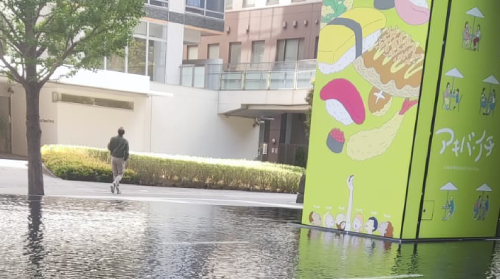Welcome to TsukiGakkou your blog and tool to learning and improve japanese.
Want buy stuff? Find products related to anime and Japanese culture in general. You will also find recommended items for exchange students in Japan.
Amazon Shop ListNegative Forms: ませんでしたか, ませんか, and ません
Japanese can be a complex language to learn, especially when it comes to understanding different verb conjugations and their nuanced meanings. Today, let’s delve into three common negative forms: ませんでしたか, ませんか, and ません. Each of these forms serves a distinct purpose and is used in different contexts. Let’s explore their meanings and usage with some […]
Read More [...]Negative Command or Request: ないで and ないでください
In Japanese, expressing a negative command or a request not to do something can be done using the phrases ないで (naide) and ないでください (naide kudasai). Both phrases are essential in everyday communication and have distinct nuances and appropriate contexts for their use. ないで (Naide) The phrase ないで is an informal or colloquial way to say […]
Read More [...]Expressing Skills: のがへた and のがじょうず
In the Japanese language, expressing one’s skill level in various activities is a common and essential part of daily conversation. Two key phrases used for this purpose are のがへた (no ga heta) and のがじょうず (no ga jōzu). These phrases allow speakers to convey their proficiency, or lack thereof, in performing certain actions. Let’s explore their […]
Read More [...]Wishes and Desires: ~したい, ~したくない, ~したがる, and ~したがっている
In Japanese, expressing desires and wants is quite nuanced and involves several different forms. Four commonly used expressions to convey one’s wishes or the wishes of others are ~したい, ~したくない, ~したがる, and ~したがっている. Let’s break down each of these forms and see how they are used with examples. ~したい (Want to do) This form is […]
Read More [...]Desires and Wants: ~がほしい, ~はほしくない, ~をほしがる and ~をほしがっている
In Japanese, expressing desires and wants can vary depending on the subject and context. Let’s delve into the usage of ~がほしい, ~はほしくない, ~をほしがる, and ~をほしがっている, providing examples for clarity. がほしい (Ga Hoshii) – “I want” This expression is used when the speaker desires something. It is primarily used for oneself. あたらしい くるま が ほしい です。 – I want a […]
Read More [...]After and Later: ~あとに and ~あとで
In Japanese, both ~あとに (ato ni) and ~あとで (ato de) are used to indicate actions that occur later or after something else. While they may seem interchangeable at first glance, they have distinct nuances and usages. This post will explore these differences and provide examples to help you understand how to use each expression correctly. […]
Read More [...]Present and Past Tenses: です, ではありません, でした, and ではありませんでした
In Japanese, the copula is used to link the subject of a sentence to a subject complement. The most common copula is です (desu), and its various forms are used to indicate the present, past, affirmative, and negative states. Present Affirmative: です (Desu) The copula です is used to indicate the present affirmative state, similar […]
Read More [...]Without Doing: ないで and ずに
In Japanese, the expressions ないで (naide) and ずに (zuni) are used to indicate doing something without performing another action. These structures are useful for expressing actions that are done without performing a preceding action, often translating to “without doing” in English. While both forms are similar, they have their distinct usages and nuances. ないで (naide) […]
Read More [...]Simultaneously Actions: ~ながら
The Japanese grammatical structure ~ながら (nagara) is used to indicate that two actions are happening simultaneously. It can be translated to “while” in English. This versatile expression is particularly useful in both spoken and written Japanese, allowing for more fluid and natural descriptions of multitasking. Let’s explore how ~ながら is used, with examples and explanations. […]
Read More [...]Expressing Actions or States: ~まえに and ~まえで
In Japanese grammar, the particles ~まえに (mae ni) and ~まえで (mae de) are crucial for expressing actions or states that occur before a certain point in time or location. These particles play distinct roles in indicating temporal and locational relationships within sentences. Let’s explore each particle’s usage, nuances, and provide examples to illustrate their application. […]
Read More [...]








